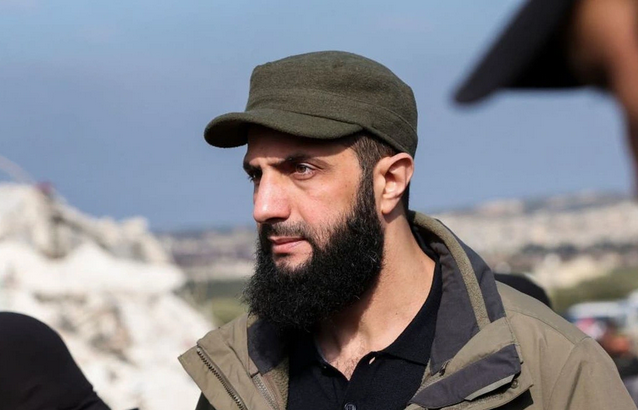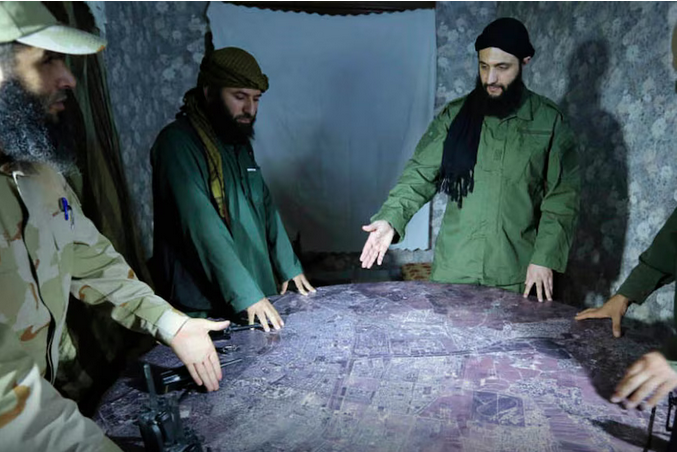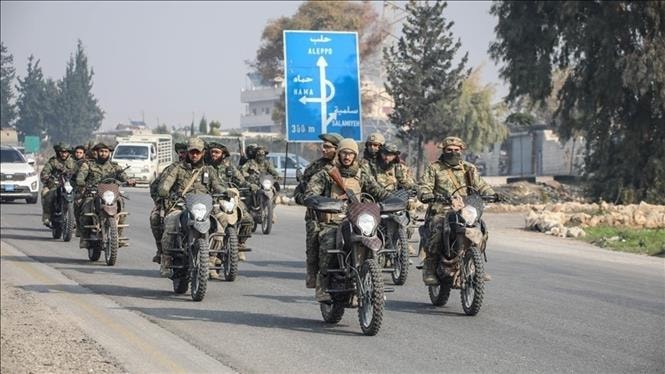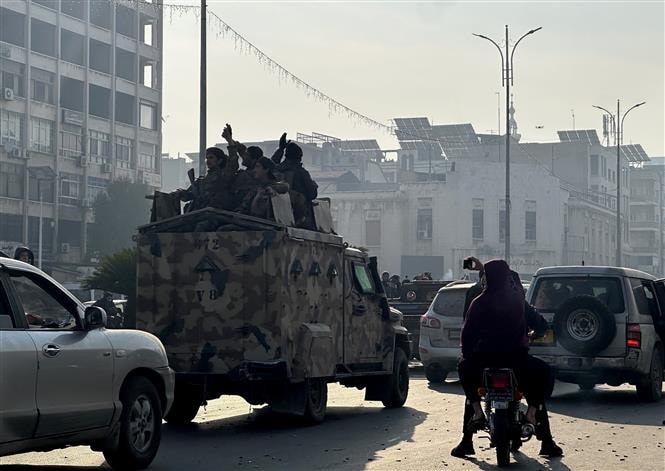Abu Mohammed al-Golani, the rebel leader who overthrew Syrian President Bashar al-Assad, has spent years rebuilding his public image.

After years of little attention, Abu Mohammad al-Golani commanded a lightning, shocking offensive that led to the collapse of President Bashar al-Assad's regime in Syria after more than 13 years of brutal civil war, according to the New York Times.
Al-Golani has spent years rebuilding his public image, renouncing his long-standing ties to al-Qaeda and declaring himself an advocate of pluralism and tolerance.
When he entered the capital Damascus on December 8, after a series of victories, he even dropped the nickname Abu Mohammad al-Golani and called himself by his real name, Ahmad al-Sharaa.
But his transformation from jihadist extremist to state-builder is now being tested.
Mr al-Golani, 42, is the leader of Hayat Tahrir al-Sham (HTS), an Islamist group formerly linked to al-Qaeda that has long controlled most of Idlib province in northwestern Syria during the conflict's long stalemate.
“He is by far the most important figure on the ground in Syria,” said Jerome Drevon, a senior analyst on jihad and modern conflict at the International Crisis Group who has met al-Golani several times over the past five years.
In late November, HTS launched the most significant challenge to President al-Assad’s regime in a decade, sweeping through Aleppo, Syria’s largest city, before moving south, seizing a series of provinces with little resistance. The rebels eventually overran the capital, Damascus, forcing al-Assad to flee to Russia.
Complicated journey
Hours after Damascus fell, al-Golani made his first appearance at the city's iconic Umayyad Mosque, declaring the fall of al-Assad's regime a "victory for the Muslim nation," according to the AP news agency.
Al-Golani, who has been listed as a terrorist by the US, and his rebel force, HTS – many of whose fighters are “jihadists” – are now a major player.
Born Ahmed Hussein al-Shara in Saudi Arabia, al-Golani was the son of Syrian exiles. His family moved back to Syria in the late 1980s and in 2003 he traveled to neighboring Iraq to join al-Qaeda and fight the US occupation.
During this time, al-Qaeda merged like-minded groups and formed the extremist self-proclaimed Islamic State (IS) of Iraq, led by Abu Bakr al-Baghdadi.
According to Arab media reports and US officials, al-Golani has been held for years in a US prison in Iraq.
In 2011, a Syrian uprising against the central government sparked a government crackdown and led to full-scale civil war.
Al-Golani's prominence grew when al-Baghdadi sent him to Syria to form an al-Qaeda affiliate called the Nusra Front. The United States has designated the group a terrorist organization and offered a $10 million reward for al-Golani's capture.
The Nusra Front eventually evolved into today's HTS.

For years, al-Golani has been trying to consolidate power, while being pinned down in Idlib province in Syria's northwestern corner as President al-Assad's regime, backed by Iran and Russia, controls much of the country.
He has eliminated rivals and former allies. Al-Golani has also sought to burnish the image of his “salvation government,” which has run the Idlib region to win the support of several international governments while reassuring Syria’s religious and ethnic minorities. He has also built ties with many tribes and other groups.
On his journey to power, al-Golani has shed his hardline Islamist uniform and donned a suit to give press interviews, talking about building state institutions and decentralizing power to reflect Syria's diversity.
“Syria deserves an institutionalized system of government, where there is no place where a single ruler makes arbitrary decisions,” he said in an interview with CNN last week, signaling the possibility that HTS will eventually be dissolved after the fall of the al-Assad regime.
“Judge not by words, but by actions,” said Mr. al-Golani.

Nusra Front and the Syrian conflict
As the Syrian civil war escalated in 2013, so did al-Golani’s ambitions. He defied al-Baghdadi’s call to disband the Nusra Front and merge it with al-Qaeda’s operations in Iraq, forming the Islamic State of Iraq and Syria, or ISIS.
Al-Golani then led the Nusra Front to split from ISIS, even fighting ISIS and eliminating much of its opponents among the armed opposition forces in Syria against the al-Assad regime.
In his first interview in 2014, al-Golani, his face covered, told a reporter from Qatari television channel Al Jazeera that he rejected political talks in Geneva to end the conflict.
He said his goal was to see Syria ruled under Islamic law and made it clear that there was no place for Alawite, Shiite, Druze and Christian minorities in the country.
Consolidating power and rebranding
In 2016, al-Golani first publicly revealed his face in a video message announcing that his group would change its name to Jabhat Fateh al-Sham -– the Front for the Conquest of Syria -- and cut ties with al-Qaeda.
“This new organization is not affiliated with any outside entity,” he said in the video, filmed while wearing a military uniform and turban.
The move paved the way for al-Golani to assert full control over the divided militant groups. A year later, his alliance changed its name to Hayat Tahrir al-Sham -- meaning the Organization for the Liberation of Syria (HTS) -- as the groups merged, consolidating al-Golani's power in Idlib province.
HTS then clashed with independent Islamist fighters opposed to the annexation, further establishing al-Golani and his group as the leading force in northwestern Syria, able to rule with an iron fist.
With his power consolidated, al-Golani initiated a transformation that few could have imagined. Swapping his military uniform for shirts and trousers, he began calling for tolerance and religious pluralism.
He appealed to the Druze community in Idlib, which has been targeted by the Nusra Front, and visited the families of Kurds killed by Turkish-backed militias.

In 2021, he gave his first interview to an American journalist on PBS. Dressed in a blazer and with short, slicked-back hair, the HTS leader now speaks more softly, saying his group poses no threat to the West and that sanctions imposed on it are unjust.
“Yes, we have criticized Western policies,” he said. “But waging a war against the United States or Europe from Syria is not right. We are not saying that we want to fight (with them).”
In recent years, al-Golani and his group have built a government in the territory they control, collecting taxes, providing limited public services and even issuing identity cards to residents. They have also been criticized at home and abroad for using authoritarian tactics and suppressing dissent.
Questions have been raised about what kind of government al-Golani would support and whether the Syrian people would accept it. In Idlib, HTS has backed a government guided by a conservative and sometimes hardline Sunni Islamist ideology.
Since the rebel offensive began, Mr. al-Golani has sought to reassure minority communities from other sects and religions. But some analysts say he now faces the test of his life: whether he can unite the Syrian people.